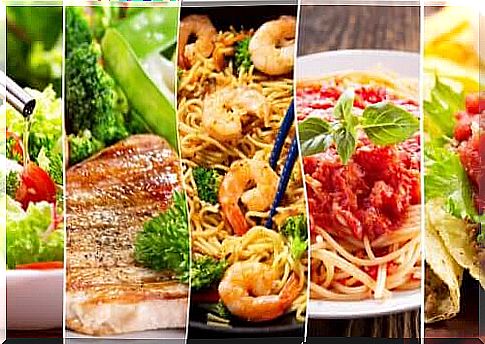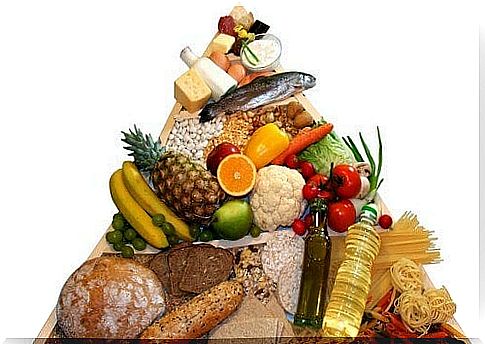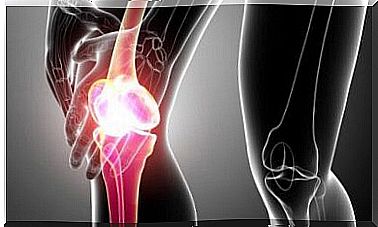Food Groups And Their Functions

The nutrients present in our dishes perform different functions within the body. If you would like to know more, this article is for you. What are the different food groups?
Being aware of the substances we ingest every day is a useful way to preserve our health, especially if we want to treat and prevent metabolic disorders. Optimal nutrition comes from food awareness.
What are the food groups?
Each food group contains one or more nutrients, namely carbohydrates, proteins, fats, vitamins and minerals. In addition to this, each also provides water in variable quantities, vital for the body.
In some, certain components prevail over others, so international guidelines on nutrition have classified the various groups as follows:
- Dairy products, yogurt and cheeses.
- Meat and eggs.
- Fruits and vegetables.
- Oil, nuts and seeds.
- Legumes, cereals, potatoes, bread and pasta.
- Sweet and fat.

What functions do foods perform?
Several studies suggest that nutrients in food perform different functions: energetic, plastic and restorative. They also argue that to achieve optimal nutritional status, the diet must be varied. Below we will analyze the different food groups in more detail.
Energy foods
Energy is the fuel the body needs to live. All metabolic processes, in fact, need it. All the actions we carry out every day (such as walking, moving and breathing) are a concrete example.
It is clear that the most direct way to get energy is to ingest food. Specifically, foods that contain carbohydrates (legumes, cereals, potatoes, pasta and sweets) perform this function. After the meal, the body digests and absorbs them in the form of glucose, the main fuel.
Fats also have this effect, as they provide twice as many calories as carbohydrates. For this reason, oils, nuts, egg yolks and even seeds are energy foods. When ground or in the form of oils, the latter release fatty acids.
Foods with a plastic function
By plastic function of food we mean the ability to form cellular structures and tissues. Foods that have this characteristic contain proteins, such as meat, dairy products and egg white.
This nutrient is rich in amino acids, some of which are essential as the body does not produce them, so they must be ingested through food. In addition to being indispensable for structural synthesis, they perform various functions.
Foods of animal origin are distinguished by their protein content, but this does not mean that it is not possible to obtain them from vegetables. In fact, science shows that grains, legumes and nuts contain significant amounts of protein.
Those who follow a vegan or vegetarian diet can cover their daily nutritional needs under the supervision of a professional specialized in this area. Tissue formation is a vital process that should not be overlooked, also because it requires tailored dosages.
Regulatory or protective function

This function is determined by the action of vitamins, minerals, anti-inflammatory substances and phytochemical components (active products produced by plants). They are contained in fruits, vegetables and greens.
We can also find some from other sources, for example iron from meat and legumes, vitamins A and D from dairy products. Their daily requirement is minimal compared to other nutrients, but they are no less important for this.
The substances described, in fact, are decisive for the body because they take part in various metabolic processes. Some prevent cellular oxidation and repair the skin (vitamins C and E), others strengthen tissues (calcium for bones and teeth) and even promote cellular reactions (zinc and magnesium).
Food groups according to their function: what to remember?
The combination of the different food groups ensures the availability of nutrients. By following a varied and balanced diet that includes proteins, carbohydrates, fats, vitamins and minerals, we will contribute to overall health.
In addition to following a healthy lifestyle, it is recommended that you avoid toxic substances, such as alcohol and cigarettes. At the same time, an active life stimulates the processes that nutrients must carry out in the body.









